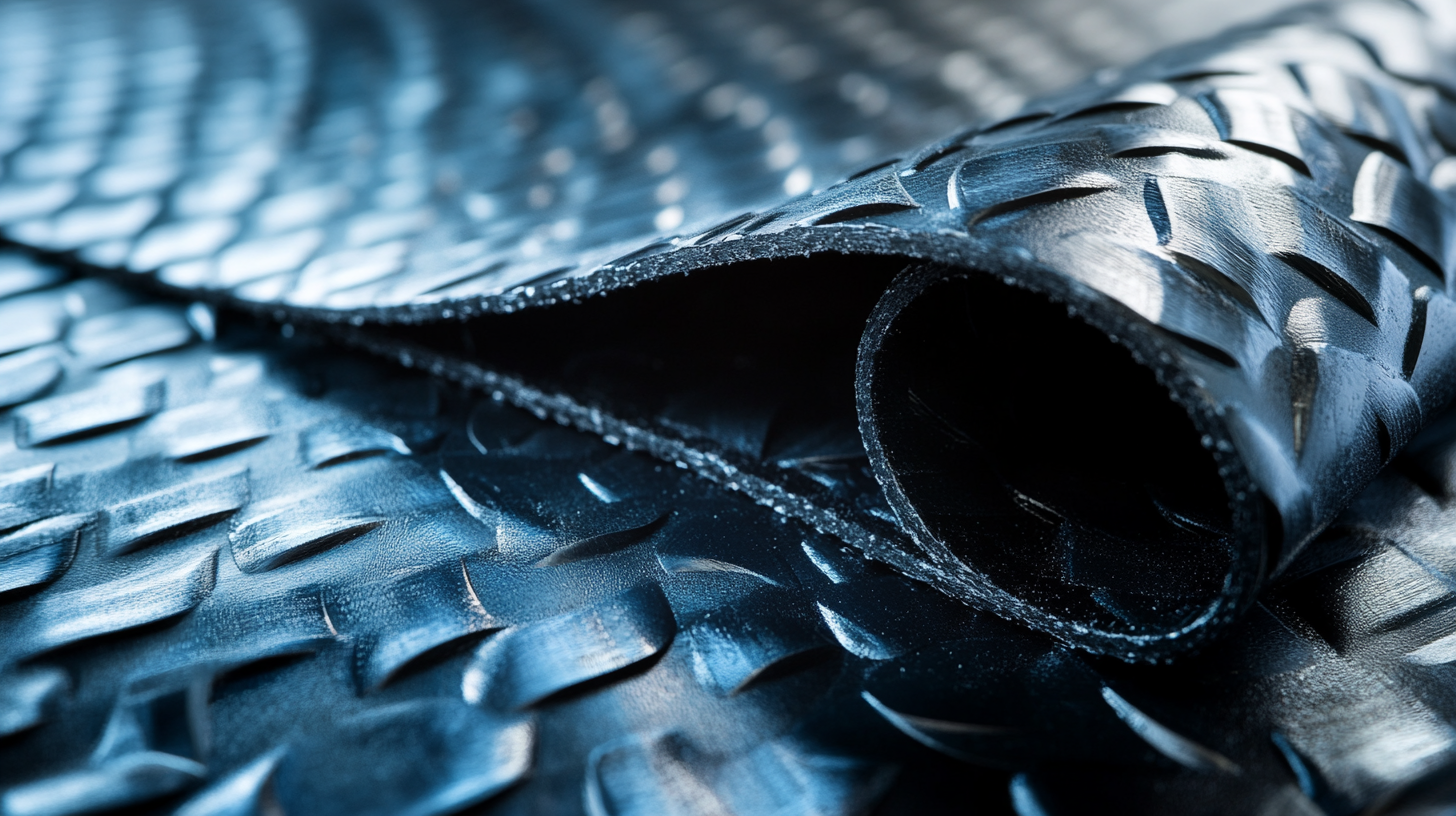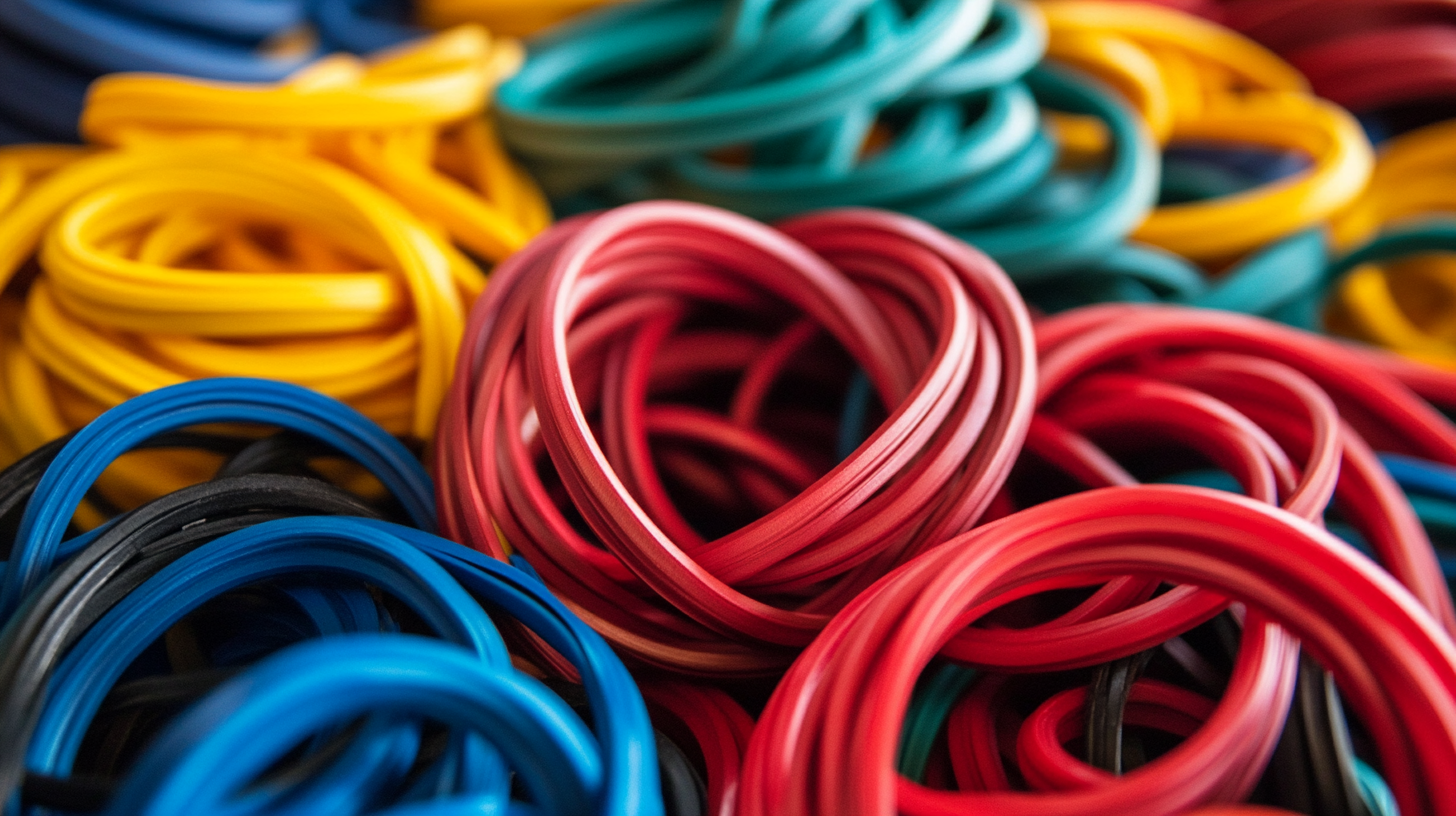Unleashing the Potential of Synthetic Rubber: A Game Changer for Global Buyers
In the rapidly evolving landscape of materials, synthetic rubber has emerged as a cornerstone substance crucial to various industries, from automotive to consumer goods. According to a report by MarketsandMarkets, the global synthetic rubber market is projected to reach $45.49 billion by 2026, growing at a CAGR of 5.2% from 2021. This dramatic growth underscores synthetic rubber's vital role in enhancing product performance, durability, and cost-effectiveness. As manufacturers increasingly pivot towards modern materials that meet both sustainability and performance criteria, synthetic rubber stands out as a game changer capable of satisfying these dual demands.
Additionally, the versatility of synthetic rubber enables it to replace natural rubber in a multitude of applications, thereby offering stable supplies and predictable pricing. With the ongoing technological advancements in polymer chemistry, synthetic rubber formulations are being tailored to meet specific needs, such as increased temperature resistance and enhanced chemical durability. As global buyers seek innovative solutions to adapt to market changes, understanding the potential of synthetic rubber is essential for capitalizing on new opportunities and driving success in an increasingly competitive environment.

The Rise of Synthetic Rubber: Overview and Innovations in the Industry
The rise of synthetic rubber has marked a significant turning point in the global materials landscape. Initially developed during World War II to address shortages of natural rubber, synthetic rubber has since evolved into a vital component across multiple industries, including automotive, construction, and consumer goods. Innovations in polymer chemistry have led to the creation of specialized synthetic rubbers with enhanced properties such as improved durability, elasticity, and resistance to heat and chemicals. These advancements not only meet the increasing demands of various applications but also provide opportunities for manufacturers to reduce production costs and environmental impact. Moreover, the industry is witnessing a surge in eco-friendly alternatives and sustainable practices. With growing concerns around climate change and resource depletion, companies are investing in the development of bio-based synthetic rubbers, which utilize renewable resources rather than traditional petroleum-based feedstocks. This shift not only helps in achieving sustainability goals but also appeals to the environmentally-conscious buyers who are actively seeking greener options. The incorporation of innovative recycling processes is further enhancing the appeal of synthetic rubber, as it greatly reduces waste and promotes a circular economy. As global buyers increasingly recognize the multifaceted benefits of synthetic rubber, its adoption is poised to accelerate. The combination of advanced materials technology and sustainable practices positions synthetic rubber as a game changer in the market. With these innovations, buyers can expect significant improvements in product performance while contributing to environmental stewardship, making synthetic rubber an essential material for the future.

Key Advantages of Synthetic Rubber Over Natural Rubber for Global Buyers
Synthetic rubber has emerged as a pivotal material for global buyers, offering several key advantages over its natural counterpart. One of the primary benefits is its consistency in quality. While natural rubber can experience fluctuations due to environmental factors and agricultural practices, synthetic rubber is manufactured under controlled conditions, ensuring uniformity in properties and performance. This reliability makes it an appealing choice for industries that require precise materials, such as automotive and manufacturing sectors.
Moreover, synthetic rubber showcases superior resistance to heat, chemicals, and abrasion, which enhances its durability compared to natural rubber. This resilience translates to longer-lasting products, reducing the frequency and costs associated with replacements. Additionally, the ability to engineer synthetic rubber to meet specific demands allows manufacturers to tailor materials for unique applications, further augmenting its appeal to global buyers looking for versatility in their supply chains.
Cost-effectiveness is another compelling reason why synthetic rubber is becoming increasingly preferred. The production of synthetic rubber can be scaled efficiently, which helps stabilize prices and protect against the volatility often seen with natural rubber markets. This economic advantage, combined with enhanced performance characteristics, positions synthetic rubber not only as a practical alternative but also as a strategic choice for buyers aiming to optimize their product offerings in a competitive global landscape.

Market Trends: The Growing Demand for Synthetic Rubber Worldwide
The global synthetic rubber market is undergoing significant transformation, driven by increasing demand across various industries. According to the latest strategic business report, the market, valued at approximately $19.2 billion in 2023, is anticipated to expand to a remarkable $24.6 billion by 2030. This growth reflects a broader trend as manufacturers and consumers recognize synthetic rubber's versatility and performance benefits compared to natural rubber alternatives.
Market insights also illustrate the interconnected growth of related sectors, such as the rubber molding industry, which is projected to see its value rise from $694.48 million in 2024 to over $914 million by 2033. Increasing applications in automotive, construction, and consumer products underscore the rising significance of synthetic rubber, particularly as industries pivot towards sustainable and efficient materials.
Furthermore, the ongoing development of innovative rubber compounds aligns with sustainability trends, leading to heightened interest in synthetic latex rubber. Projections indicate a market value reaching $17 billion by 2035, with a steady growth rate of 1.6% CAGR. As manufacturers respond to these demands, strategies emphasizing eco-friendliness and biodegradability will likely play a pivotal role in shaping the future landscape of synthetic rubber markets globally.

Sustainability in Synthetic Rubber Production: Challenges and Solutions
The tire industry is undergoing a significant transformation as companies like Apollo Tyres focus on sustainable materials amidst rising costs. The shift towards synthetic rubber, enhanced by bio-based alternatives, highlights a growing commitment to environmental stewardship. By integrating these sustainable materials into their production processes, Apollo Tyres is not only addressing the economic pressures from surging raw material costs but also aligning with global sustainability goals. This innovative approach reflects a proactive stance in redefining the landscape of tire manufacturing.
Research and development in sustainable rubber production are critical to overcoming the challenges associated with traditional materials. While natural rubber has long been lauded for its eco-friendliness, it still presents environmental issues that synthetic alternatives can address. The exploration of sustainable practices in the tire industry is crucial, particularly as global concerns surrounding petroleum resource depletion intensify. Companies investing in precision-driven innovation can leverage advanced technologies to optimize their manufacturing processes, ultimately contributing to a more sustainable circular economy.
As the global rubber tire market is projected to experience significant growth, the embrace of sustainable synthetic rubber represents a pivotal opportunity for companies and consumers alike. This transition not only promises to enhance the economic viability of tire manufacturers but also plays an essential role in mitigating the environmental impact associated with traditional rubber production. The tire industry's future hinges on these sustainable initiatives, driving a new era of innovation that prioritizes both performance and ecological responsibility.
Future Prospects: How Synthetic Rubber is Transforming Various Industries
Synthetic rubber is poised to transform various industries in response to evolving market demands and the imperative for sustainability. As innovations within synthetic biology reshape traditional manufacturing processes, the potential applications of synthetic rubber are expanding. This evolution is particularly evident in the global polybutadiene market, where forecasts for 2025 and beyond highlight significant growth opportunities. Businesses are increasingly seeking sustainable materials, and synthetic rubber offers a path to reduce reliance on natural rubber while addressing environmental concerns.
The chemical industry, in its 2025 outlook, emphasizes a commitment to innovation and sustainability, which aligns with the growing adoption of synthetic rubber. Companies are integrating eco-friendly processes into their production lines, positioning themselves to capitalize on the rising demand for sustainable products. Additionally, efforts to recycle scrap tires into synthetic fuel underscore the multifaceted benefits that synthetic rubber can deliver—not only as a primary material but also in mitigating waste and enhancing resource efficiency.
Furthermore, acquisitions, such as Trinseo's purchase of Arkema's PMMA business, signal a strategic shift toward building more resilient supply chains that leverage synthetic materials. This convergence of innovation and sustainability is likely to drive the synthetic rubber market, paving the way for transformative changes across sectors such as automotive, consumer goods, and construction. As industries adapt to these changes, the potential of synthetic rubber becomes increasingly apparent, underscoring its role as a game changer for global buyers.


